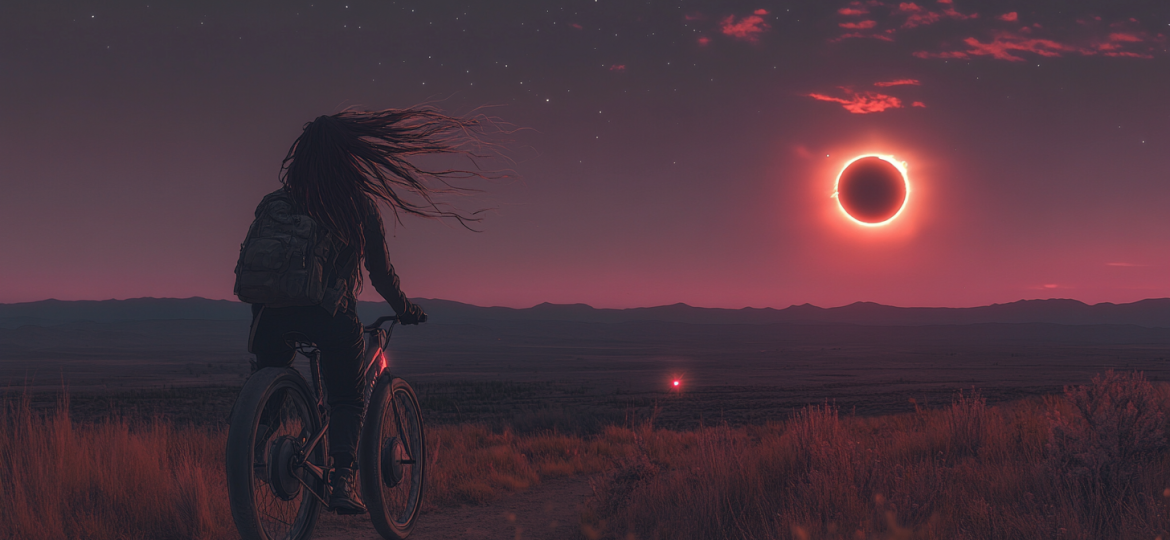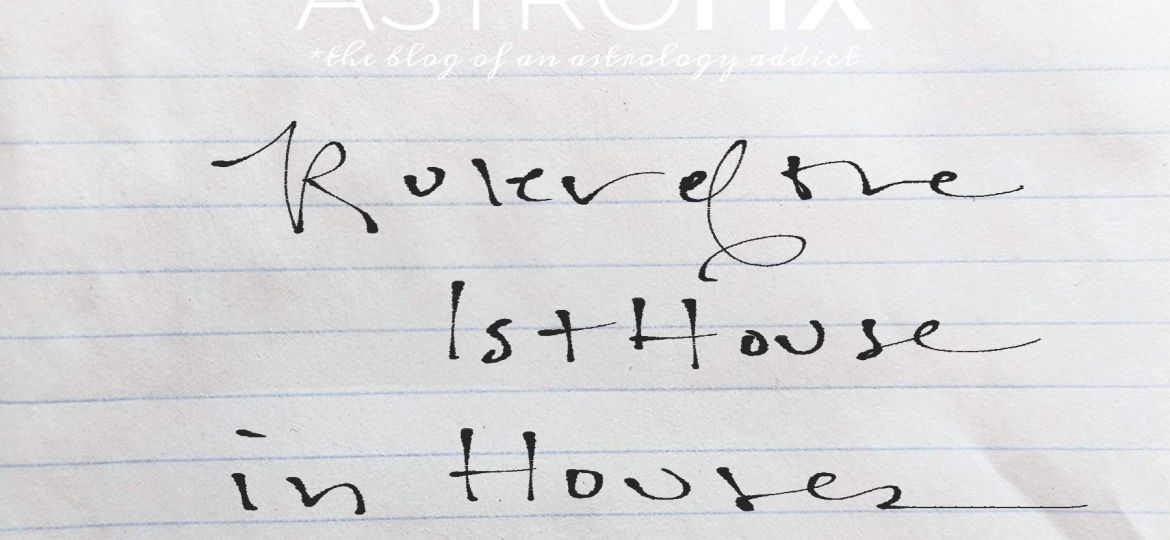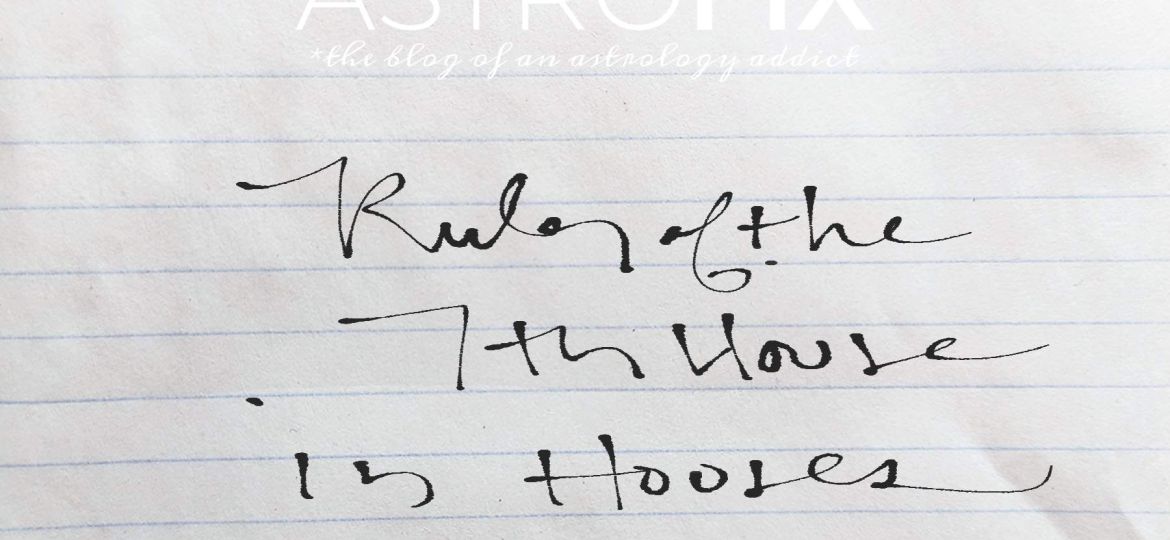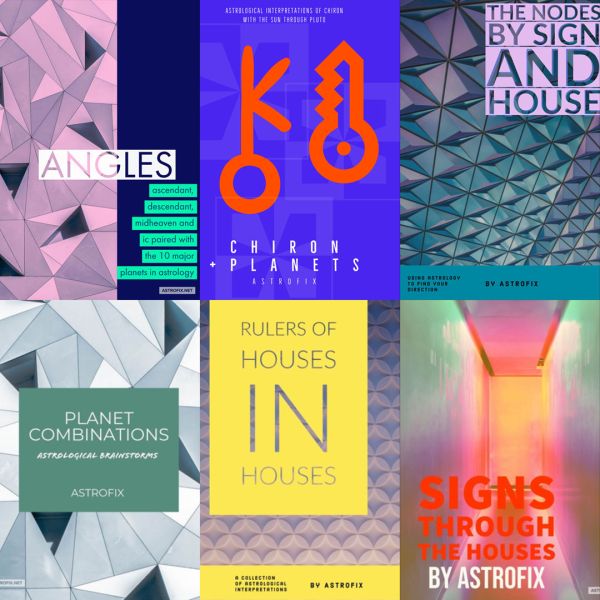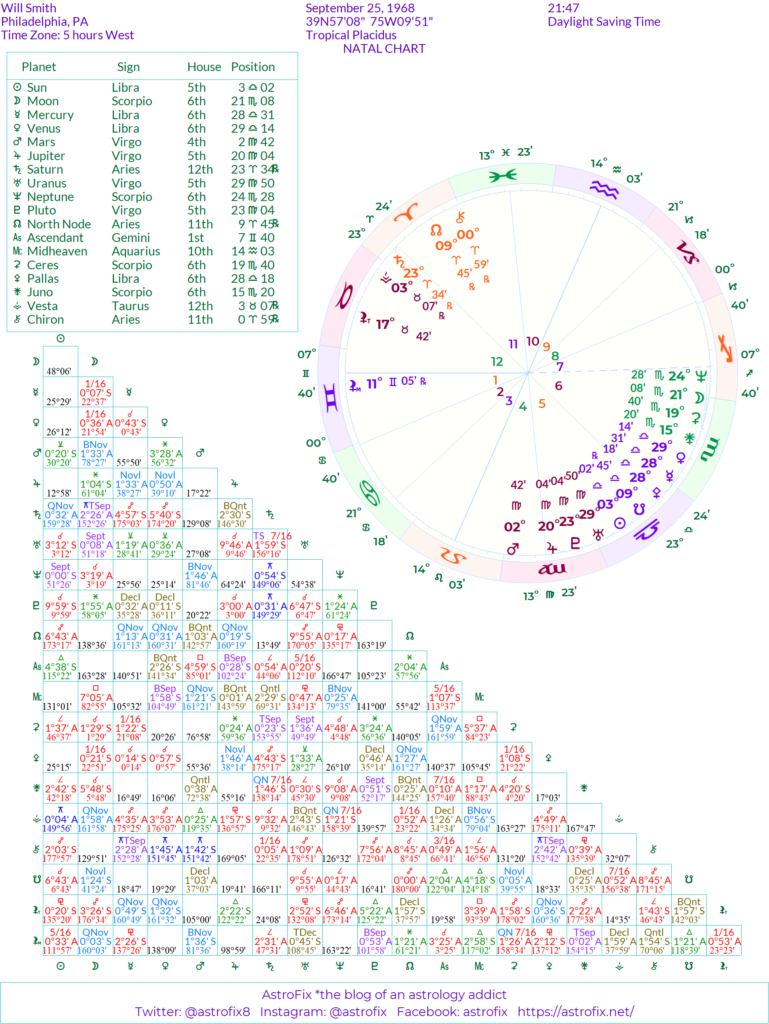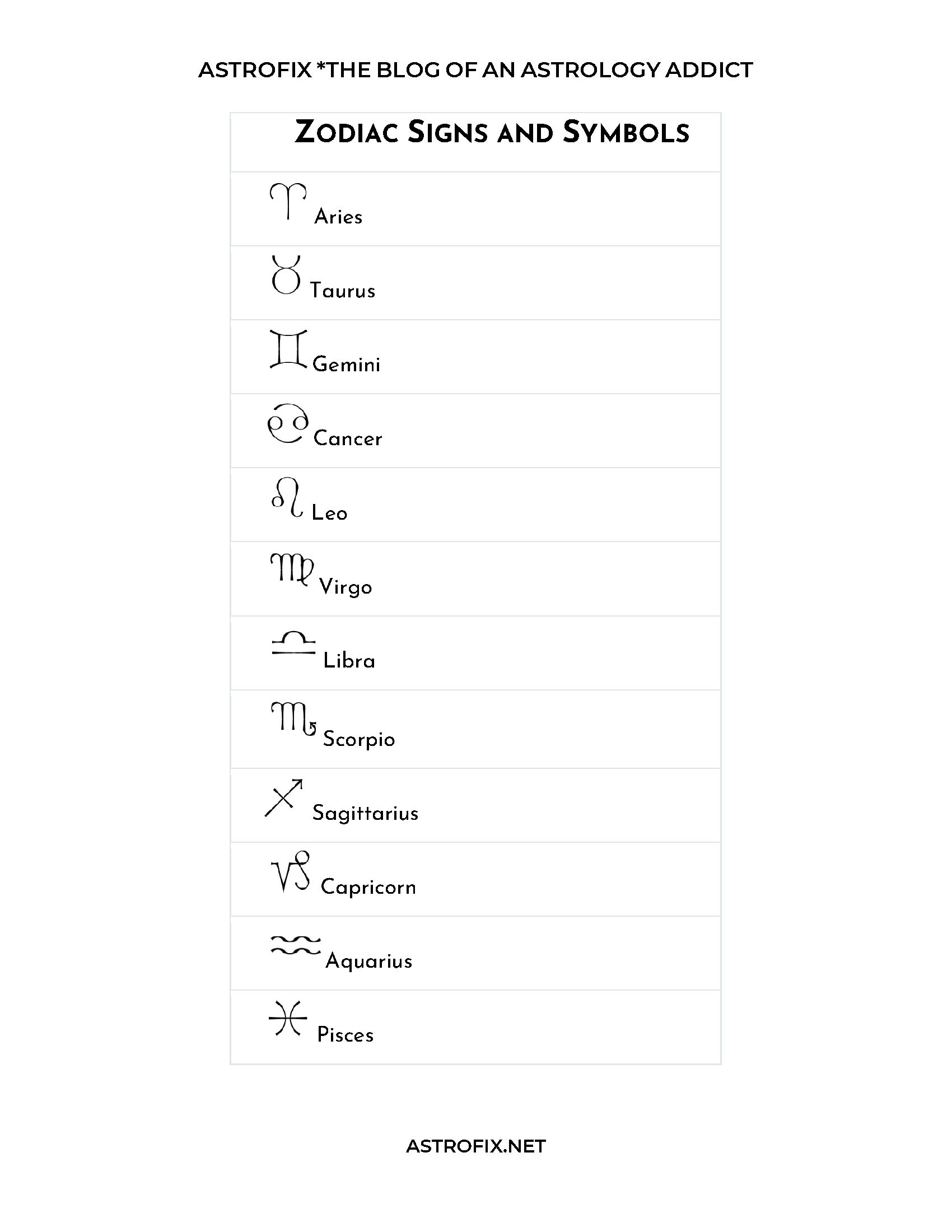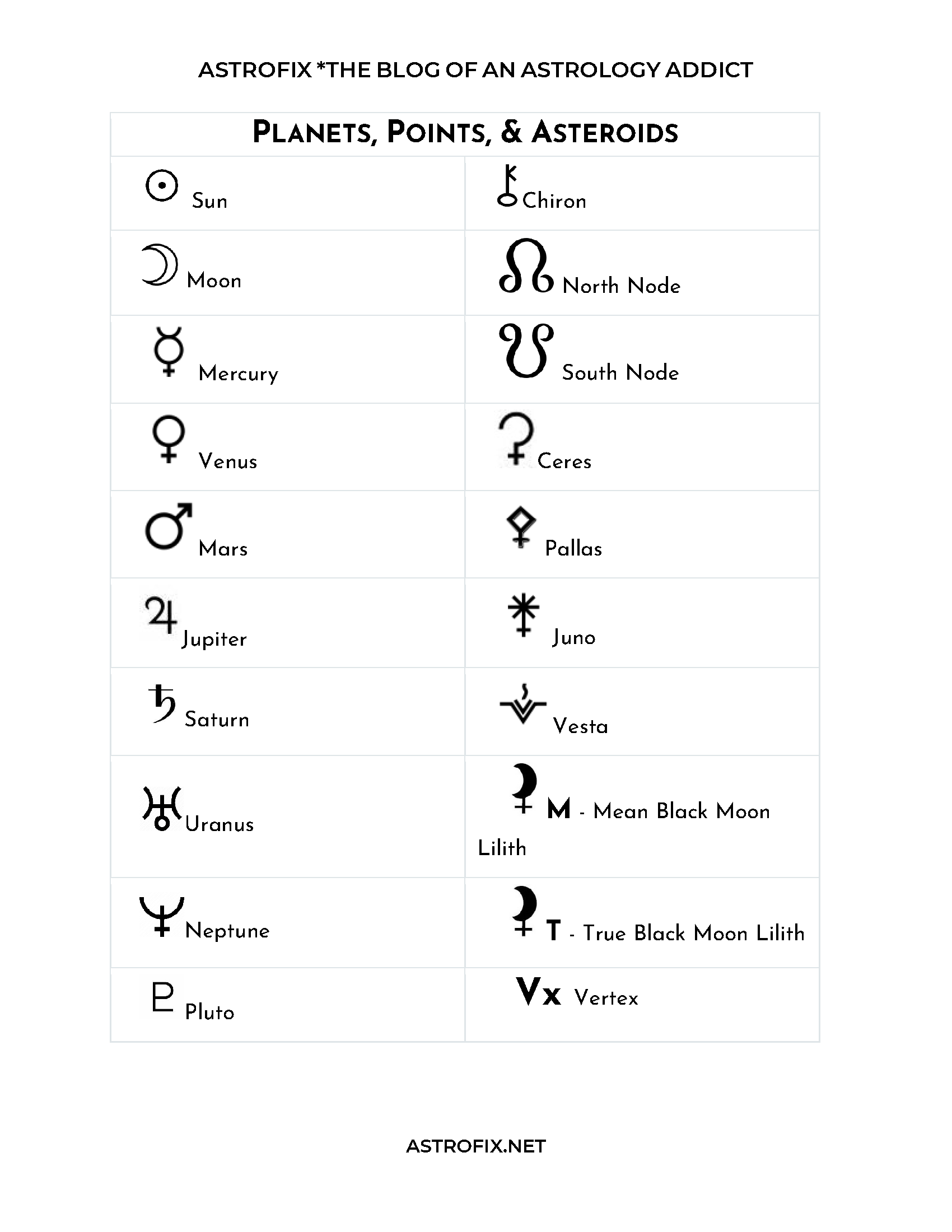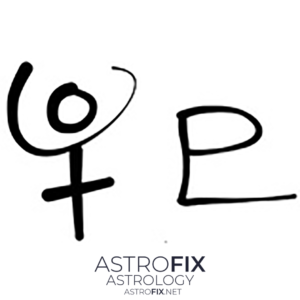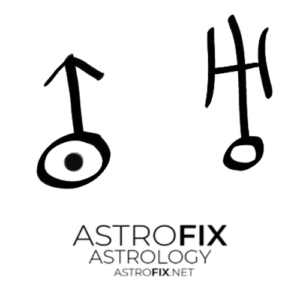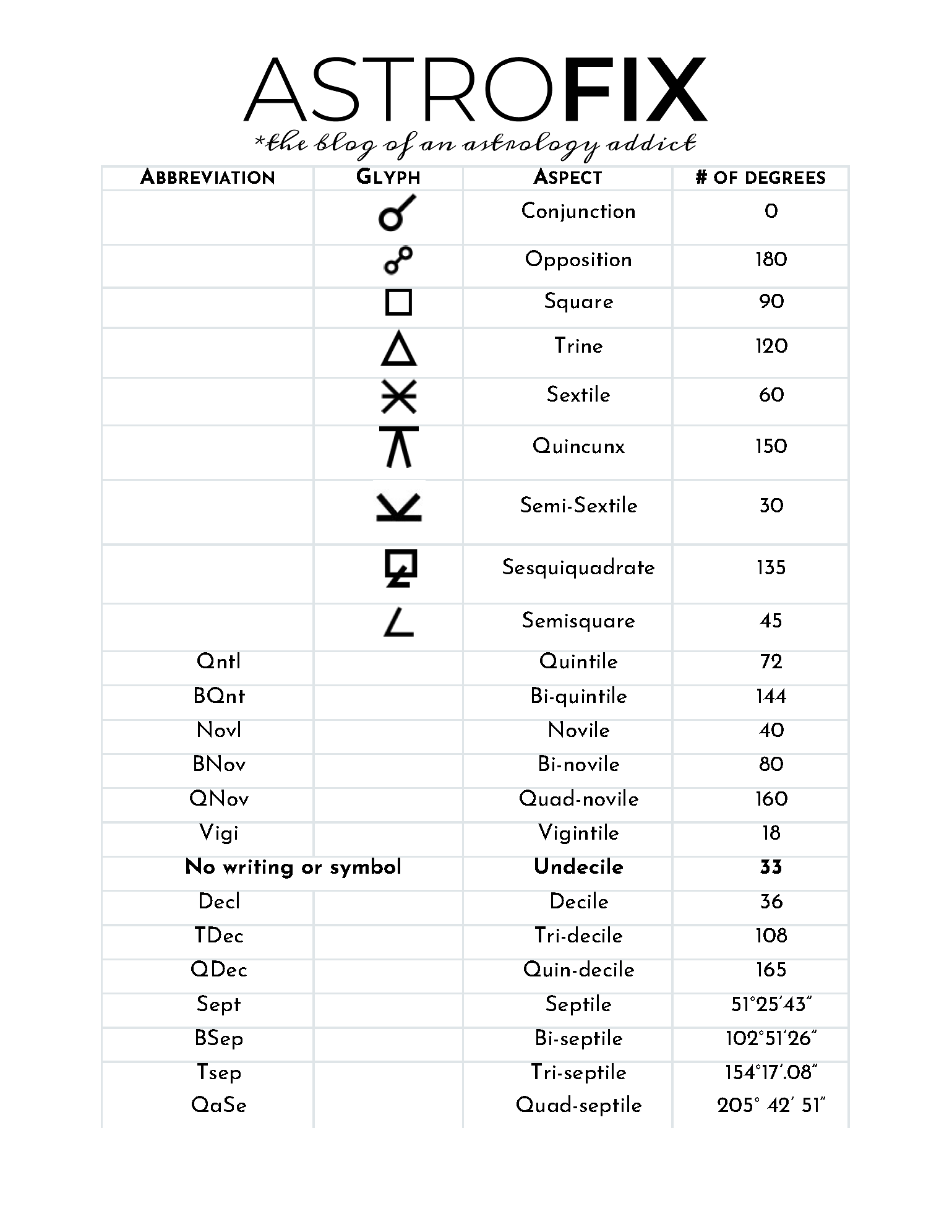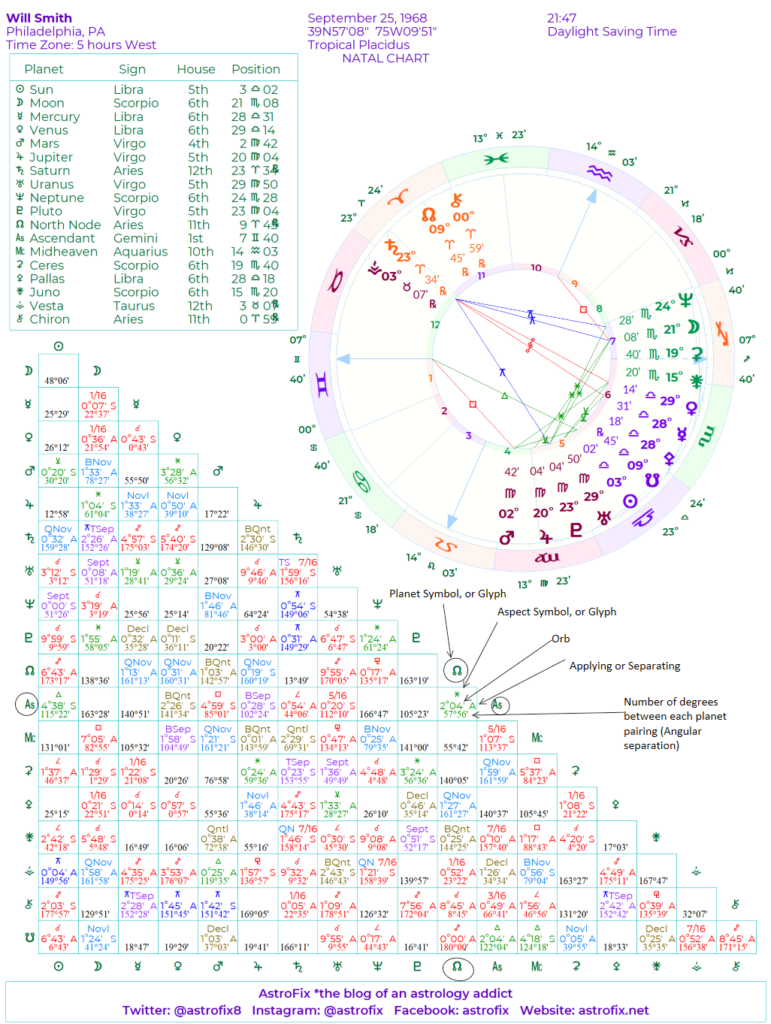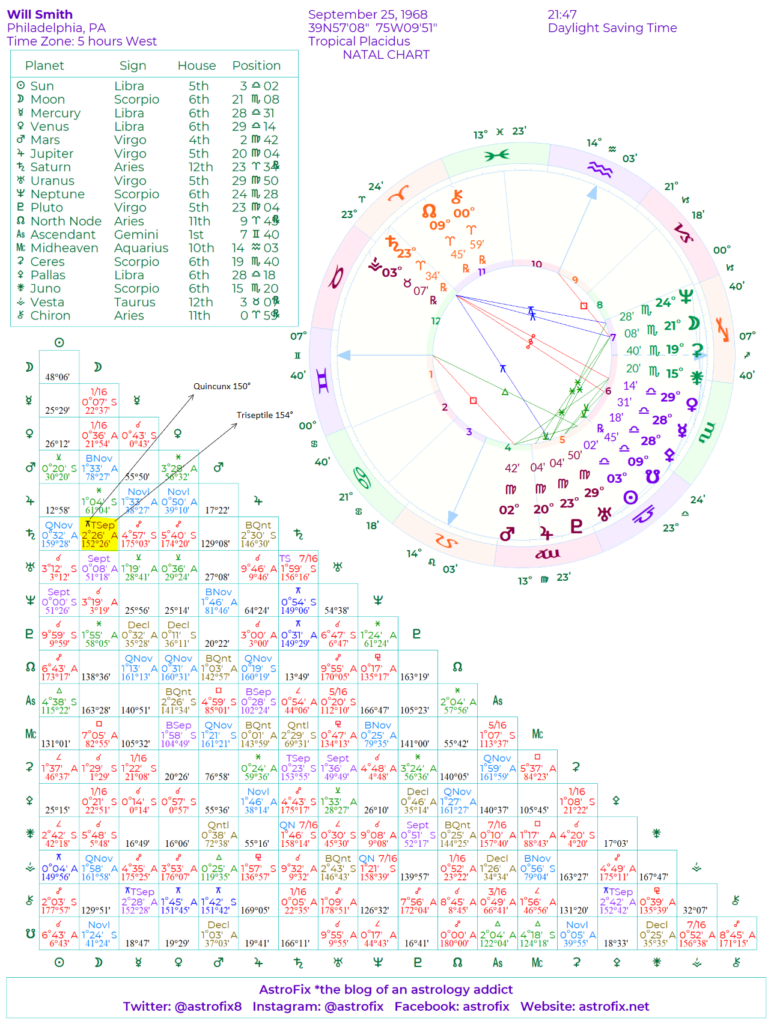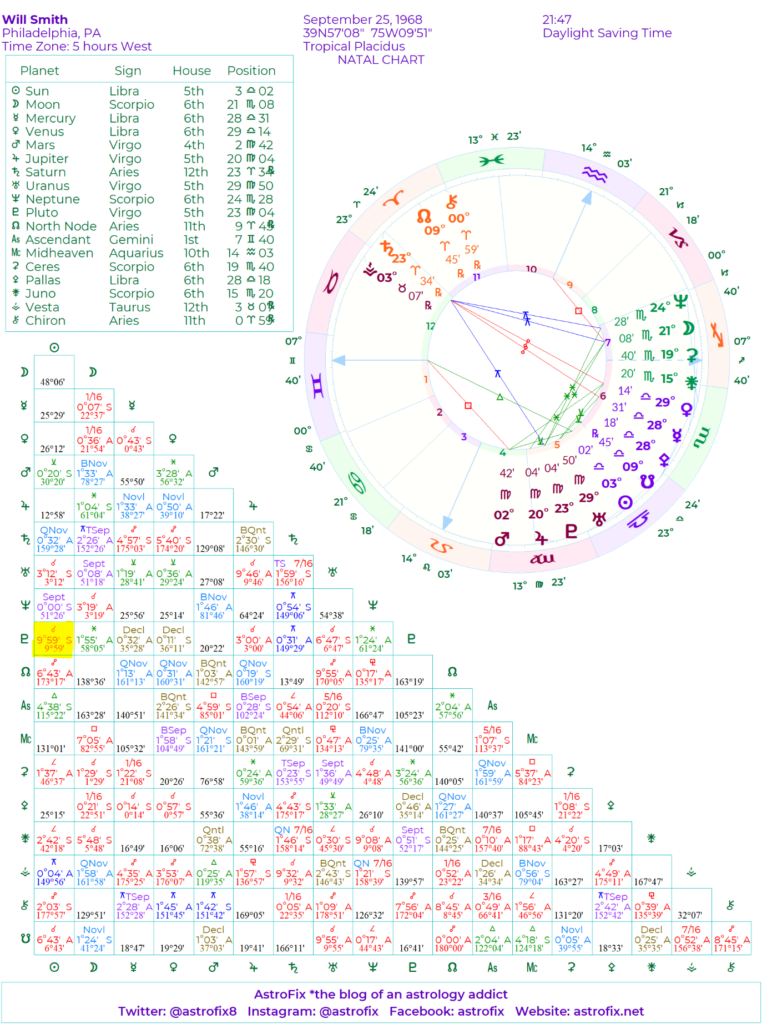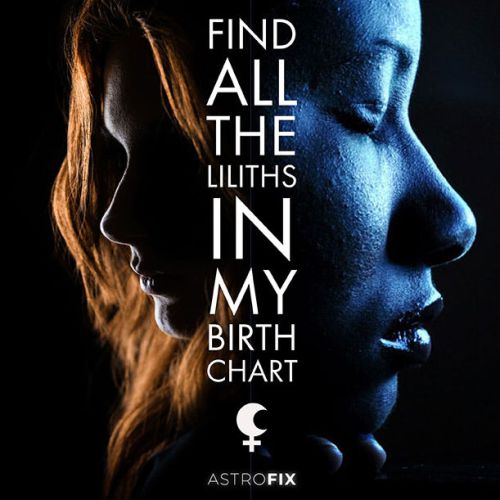How to Read Your Natal Chart and Aspectarian
Reading the Aspectarian
Symbols that show time
| ⁰ = degrees |
| ‘ = minutes |
| “ = seconds |
Step by Step
- The upper symbol in each box is the type of aspect.
- The middle number is the orb of the aspect, meaning, how close the aspect is to being exact.
- ‘A’ indicates an applying aspect, meaning that the planets are moving towards each other and the orb will get smaller as time goes by.
- ‘S’ indicates a separating aspect, meaning that the planets already formed the exact aspect and now they are moving away from each other.
- The bottom number is the total number of degrees between each planet pairing.
- In chart 2, the aspect between the Sun and Pluto is highlighted
- The Sun and Pluto are 9 degrees and 59 minutes apart, separating
- The Sun and Pluto form a conjunction aspect
- The conjunction aspect is a zero degree aspect
- The Sun and Pluto are 9 degrees and 59 minutes apart from making a perfect conjunction
- Boxes that contain only the bottom number show that the planets do not form an aspect to each other and they do not have a harmonic relationship.

